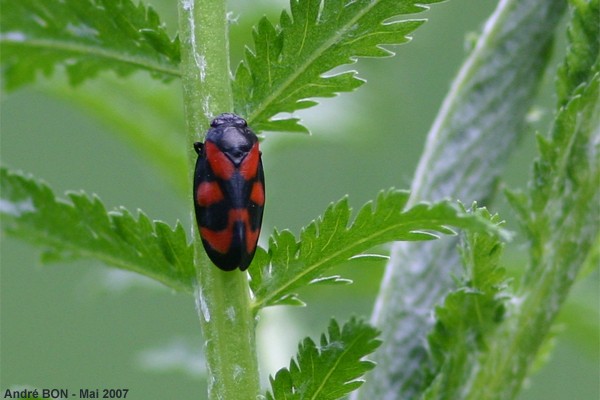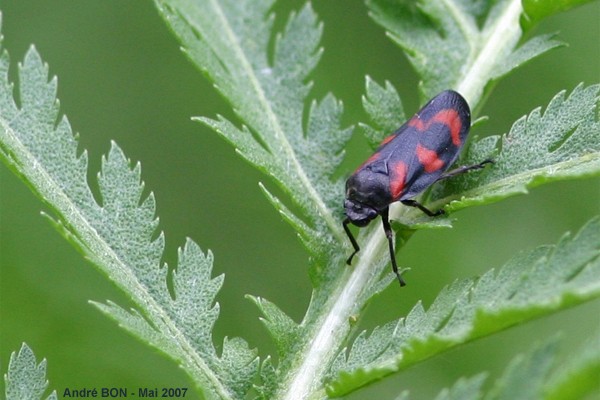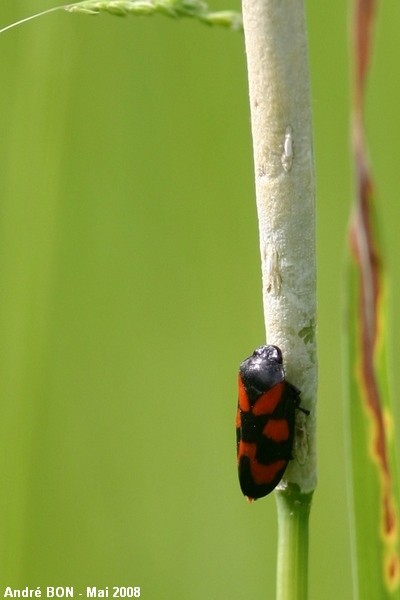



| Black and Red Froghopper (Cercopis vulnerata (Rossi, 1807)) |




|
|
Scientific name: Cercopis vulnerata (Rossi, 1807) Common name: Black and Red Froghopper Other names: Red and Black Froghopper, Black and Red Leafhopper, Red and Black Leafhopper. French name: Cercope sanguinolent, Cercope rouge sang, Cercope sanguin, Cercope flagellé Order: Hemiptera Family: Cercopidae Wingspan : 11 mm Biotope: Meadows, woodland edges, dunes. Geographic area: Europe. Observation period : May to August. |
The Black and Red froghopper has a lengthy oval-shaped body. The wings are covering the body while resting. You can easily recognize it by its bright red marks on a black background. It differs from similar species, Cercopis intermedia and Cercopis sanguinolenta, by the U-shaped red band near the tip of the wings. It is more straight-shaped on these two other species. Furthermore Cercopis intermedia has red knees. This insect feeds on the sap of plants. The adult Red and Black Froghopper, which is able to fly, can also perform huge leaps more than 5 feet away, using their hind legs. Larvae grow underground inside some kind of foam called "cuckoo-spit". The Black and Red Froghopper has a 3-steps lifecycle (egg/nymph/adult), compared to other insects such as butterflies and bees which have a 4-steps life cycle (egg/larvae/pupa/adult). |
| [To know more about the Black and Red Froghopper] [Next picture] [Top] |

|
The knees are black, so this is not Cercopis intermedia. |
| [To know more about the Black and Red Froghopper] [Next picture] [Previous picture] [Top] |

|
The bright colours of the Black and Red froghopper allow to easily find it among high grasses. |
| [To know more about the Black and Red Froghopper] [Next picture] [Previous picture] [Top] |

|
I haven't seen the great leap of the Black and Red froghopper, so I have been able to quietly shoot several pictures. |
| [To know more about the Black and Red Froghopper] [Previous picture] [Top] |

|
I have done all my obervations of Black and Red Froghopper in the same clearing next to the forest edge. |